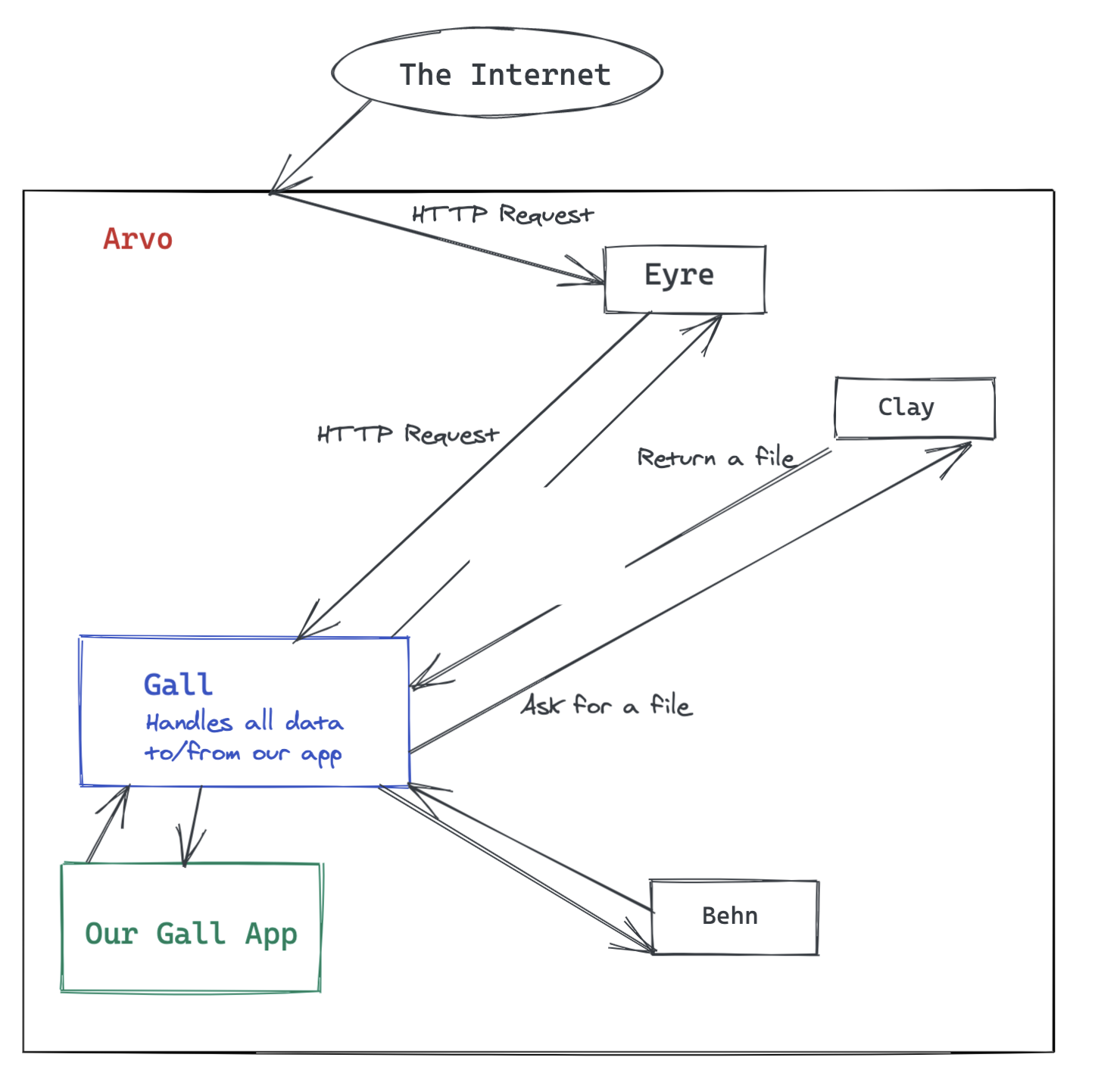-
This guide has been superseded by the urbit.org Gall Guide and is no longer actively maintained. Some parts of this guide are outdated, particularly in the areas of front-end integration and desk management/distribution.
-
The "Backend Foundation" part of the guide is complete. The remaining sections are a work-in-progress.
This guide will give you a full, working knowledge of every aspect of creating Gall modules in Urbit. Over the course of the guide, we will build up a code review/homework submission app that uses all aspects of Gall and a Landscape frontend.
This guide is for anyone with an intermediate knowledge of Hoon (Hoon School 101 should be enough). To write Gall apps that interact with the frontend, you'll also need some knowledge of Javascript.
- Workflow Setup
- The 10 Arms of Gall: App Structure
- App Lifecycle and State
- Importing Code and Static Resources
- Talk to Ships: poke, watch and marks
- scry & on-peek
- HTTP & Static Files
- Call from Outside: JSON & channel.js
Gall is a program (OS kernel or "vane") that runs in the background on Urbit's operating system, Arvo. It manages most of the programs you think of as Urbit's apps.
Gall's capabilities go well beyond what you normally think of as "standalone applications." Because of Urbit's design, Gall apps/modules can cleanly interact with other apps/modules on the local ship or remote ones. They also can call the operating system in ways that are much more manageable than you may be used to in Unix programming (if you have that background).
Gall modules can, for example:
- run background chron jobs that periodically check your data
- coordinate data sources from other Gall apps
- provide full-blown user experiences with frontend
- run database resources that back multiple services
Most of the Urbit apps we know and love, like Chat and Publish, are Gall applications, but so are the "background" modules that coordinate your experience, like the group data store and logic.
Gall handles all messages going into your app, and routes all messages going out from your app to the correct destination.
- App Registration: Gall listens for commands to register new user applications and start watching them.
- Compilation: Gall re-compiles registered apps whenever their source code changes.
- Upgrades: Gall manages an app's transition from one version to the next, making sure that all old data is imported correctly to the new version.
- Requests between a Gall app and Arvo vanes: Gall provides a layer between all of its registered apps and calls out to the Arvo OS, for operations like HTTP requests/responses and file access.
- Requests between Gall apps themselves: Gall apps on one ship can send each other calls and request data to be processed.
- Requests between Urbit ships: Gall provides interfaces to handle all the messages that happen when ships send messages to each other, or subscribe to resources on each other.
You probably have written generators when learning Hoon. Generators are awesome! However, they have a different use-case from Gall apps, and it's important to understand when you want each of them.
Generators are used to process data. They take in some simple input, like an argument or the current state of your ship, and return a value based on that. They're similar to command-line utilities in Unix.
Gall apps are for when you want a longer running service, more like a daemon in Unix, something that's always running in the background, waiting for messages. Typical use cases:
- HTTP handling
- Work with the OS
- Long-running application on your ship
- Hosting a remote service for other ships
To write Gall programs, you need a decent understanding of Hoon. To write Gall programs that use Landscape, you need to know Javascript. For the JS part, we'll go over in a lot of detail, so that even if you haven't seen much React, you'll be able to follow along.
Over the course of the "Backend Foundation" series, we will create the backend for a group chat admin app, picky that allows monitoring and management of users in all chats you are an owner or admin of. In each lesson, the exercises will build on each other to progressively create the application.
Throughout this guide, I generally use "prose" explanations. When a certain section is very code-heavy (such as breaking down all pieces of a type), I put the whole thing in a code block and use comments (::) to explain.
Also, while Gall applications are technically referred to as "agents", I also use the words "app" and "program" at times. All are equivalent.

